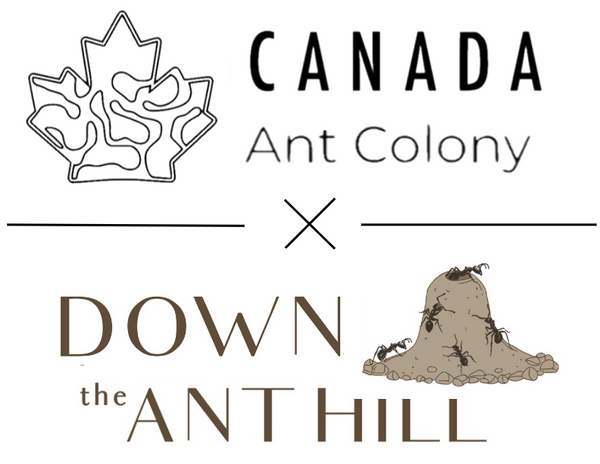Lasius neoniger are quite cute little ants. They love their honey and always seem to be happy. Easily recognizable by their orange/brown-ish body these ants dominate brick walkways up north.
Labour Day Ants can be found for sale here

Taxonomy
Family: Formicidae
Subfamily: Formicinae
Tribus: Lasiini
Genus: Lasius
Species: Lasius neoniger
Basic info
Origin: Canada and United States
Habitat: Open areas, meadows, fields, beaches and sand dunes. Very abundant and ecologically relevant ant. Enjoys warm temperatures but doesn’t need them, I have kept them in an air-conditioned room and they have done just fine. They enjoy moist nest with a good amount of darkness.
Colony form: Possibly polygynous but usually only has one queen
Colony size: 12.000-20.000 workers
Colony age: 5-15 years
Founding: Fully claustral
Workers: Monomorphic
Nesting: These ants dig nests into dirt and often burrow quite deep. (at least a foot). They also love living under stones.
Hibernation: These ants require at least 3-4 months of hibernation in 4-6 degrees celsius.
Reproduction: Nuptial flights throughout August and September.
Appearance
Workers: Workers have a smaller dark orange/burgundy head and a light brown thorax. Their gaster is orange.
Queens: Small light burgundy head with a light orange. Gaster is orange. Also has a shiny tint on gaster.
Drones: Dark brown head with maroon thorax. Gaster is dark orange and the legs are semi-transparent.

Labour Day Ant Queen Courtesy of River Ahlquist
Size
Workers: 3-5mm
Queens: 8-10mm
Drones: around 5-6mm
Development time at 75F (24C)
Egg to larvae: around 8 days
Larvae to pupa: around 8 days
Pupae to worker: Around 10 days
Egg to worker: 26 days
Ant keeping information
Recommendation: Great for beginners. Very excited and appear constantly happy.
Temperature: 14-29° Celsius
Humidity: room humidity, nest slightly moist
Nesting materials: Nests in dirt and under stones.
Nest types: Sand-clay farm, gypsum, Ytong, acrylics and 3D-printed nests (preferably with a bottom coat of sand-clay or grout). The ants are rather dry-resistant however the nest should feature a water source, like a water test tube attached to the nest.
Formicarium size: Should fit the current colony size. Be prepared to expand, colonies grow quickly.
Formicarium accessories: Heat source (optional).
Substrate type: This species can walk well on most surfaces. Glass, vinyl tubing, acrylics, sand, clay and grout pose no issues. They can also climb vertical and upside down on glass but the larger workers have problems with climbing steep vinyl tubing.
Behaviour
Small colonies are quite shy. They sometimes investigate a sound or smell. The larger the colony grows the more aggressive the workers become. Foragers usually leave the nest in groups.

Lasius neoniger (Courtesy of Ben Smith)
It is very enjoyable to keep these ants. They are active, energetic and create huge brood piles.
Additional information
Lasius neoniger are a very beautiful colour which means putting them in a lighter beige/white nest really makes them stand out.
The workers hunt by charging in the direction of their prey in very sporadic movements.
Lasius neoniger do not have stringers which makes them perfect for begginers.
Due to their small size they are sort of escape artists and with larger colony a good barrier is a must.
If you’re putting them into a natural set up, put your lighting outlet near the glass to produce heat and they will nest beside it.
Diet
Sugars
Lasius neoniger love honey. From my experience, they LOVE fruits.
Protein
As for protein, they love nearly anything you give them. But they love hunting fruitflies and flies.
This guide was compiled and written by cheetolord02 and Kylori of the 'Ants and Antkeeping' discord server, which can be found here. https://discord.gg/YbZGvtR3
This guide has been posted with the permission of the authors. The original article may be found here. I have also made some edits based on my own observations
